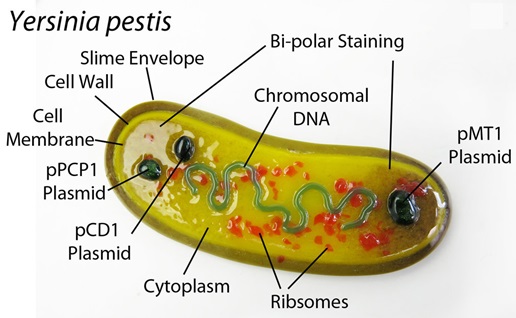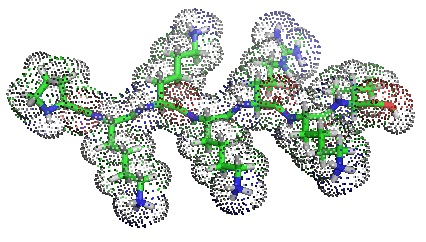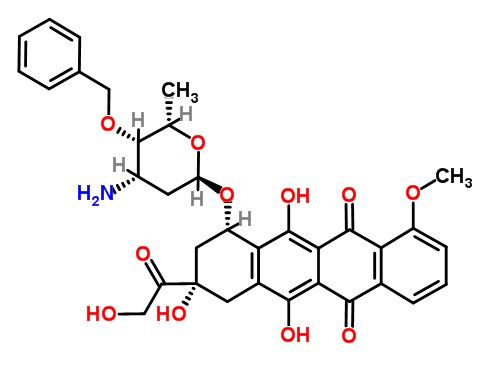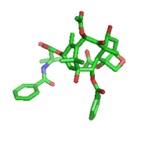|
|
|
Bio-Synthesis Newsletter - June 2018
|
The Bubonic Plague Genome
 Recently a research team has analyzed 3,800-year-old Yersinia pestis genomes. The bacteria Yersinia pestis is considered as the cause of the plague. Humans can also get the plague, after being bitten by a rodent flea that is carrying the place bacterium or by handling animals infected with plague. The identified strain was recovered from a double burial in the Samara region of Russia. The bacterium Yersinia pestis caused some of the world's deadliest pandemics, such as the Justinian Plague, the Black Death and major epidemics that swept through China in the late 1800s.The disease still affects humans around the world today. qPCR is the method of choice for the identification and quantification of the bacteria. BNAs allow the design of more specific primers and probes to enable sensitive detection. Recently a research team has analyzed 3,800-year-old Yersinia pestis genomes. The bacteria Yersinia pestis is considered as the cause of the plague. Humans can also get the plague, after being bitten by a rodent flea that is carrying the place bacterium or by handling animals infected with plague. The identified strain was recovered from a double burial in the Samara region of Russia. The bacterium Yersinia pestis caused some of the world's deadliest pandemics, such as the Justinian Plague, the Black Death and major epidemics that swept through China in the late 1800s.The disease still affects humans around the world today. qPCR is the method of choice for the identification and quantification of the bacteria. BNAs allow the design of more specific primers and probes to enable sensitive detection.
|
|
Read More
|
|
|
Oligonucleotides Conjugates as Therapeutics
 To improve low solubility, insufficient pharmacokinetic properties and poor cellular uptake of some drugs covalent attachment of various ligands can be used to influence their biodistribution, cellular uptake, and advance therapeutic applications. Ligands such as aptamers, carbohydrates, cholesterol, DNA, folic acid, peptides, proteins, RNA, small molecules, as well as tocopherol can be attached chemically to therapeutic drug candidates. Available ligand subclasses are mainly divided by their biological actions. These may include aptamers, cell-penetrating peptides, immunostimulatory oligonucleotides, miRNA, siRNA, splice-switching oligonucleotides, and others. To improve low solubility, insufficient pharmacokinetic properties and poor cellular uptake of some drugs covalent attachment of various ligands can be used to influence their biodistribution, cellular uptake, and advance therapeutic applications. Ligands such as aptamers, carbohydrates, cholesterol, DNA, folic acid, peptides, proteins, RNA, small molecules, as well as tocopherol can be attached chemically to therapeutic drug candidates. Available ligand subclasses are mainly divided by their biological actions. These may include aptamers, cell-penetrating peptides, immunostimulatory oligonucleotides, miRNA, siRNA, splice-switching oligonucleotides, and others.
|
|
Read More
|
|
|
Berubicin
 The blood-brain barrier is a major stumbling block for the treatment of the deadly brain cancer glioblastoma multiforme and drugs that can pass this barrier are needed. Berubicin is a 4'-O-benzylated analog of the anthracycline derivative doxorubicin that crosses the blood-brain barrier where it inhibits topoisomerase II via intercalation into DNA, resulting in the inhibition of DNA replication and repair, as well as RNA and protein synthesis. Berubicin appears to have a toxicity profile consistent with activity as monotherapy for recurrent glioblastoma multiforme. To optimize anticancer drugs or pro-drugs for a specific cell or tissue delivery chemical strategies can be used for the design and creation of drug conjugates. Molecular entities useful as the linker or for conjugation that facilitate enhance cell entry, delated or controlled release, as well as targeting are cell-penetrating peptides, DNA or RNA oligonucleotides, carbohydrates, or peptide-based cleavage sites for tissue-specific proteases. The blood-brain barrier is a major stumbling block for the treatment of the deadly brain cancer glioblastoma multiforme and drugs that can pass this barrier are needed. Berubicin is a 4'-O-benzylated analog of the anthracycline derivative doxorubicin that crosses the blood-brain barrier where it inhibits topoisomerase II via intercalation into DNA, resulting in the inhibition of DNA replication and repair, as well as RNA and protein synthesis. Berubicin appears to have a toxicity profile consistent with activity as monotherapy for recurrent glioblastoma multiforme. To optimize anticancer drugs or pro-drugs for a specific cell or tissue delivery chemical strategies can be used for the design and creation of drug conjugates. Molecular entities useful as the linker or for conjugation that facilitate enhance cell entry, delated or controlled release, as well as targeting are cell-penetrating peptides, DNA or RNA oligonucleotides, carbohydrates, or peptide-based cleavage sites for tissue-specific proteases.
|
|
Read More
|
|
|
Taxol or Paclitaxel and be conjugated to gold nanoparticles
 To increase solubility and effectiveness of Taxol or Paclitaxel, conjugation of the drug to gold nanoparticles via DNA linkers is possible. According to Zhang et al., resulting conjugates usually show a 50-fold increase in solubility in aqueous buffers in comparison to the unconjugated drug. For visualization of the conjugation reaction and the effect of the drug conjugate in cells, the DNA linker can be labeled with fluorophores as well. The final nano-gold DNA Paclitaxel conjugate represents a multimodal drug delivery system. To increase solubility and effectiveness of Taxol or Paclitaxel, conjugation of the drug to gold nanoparticles via DNA linkers is possible. According to Zhang et al., resulting conjugates usually show a 50-fold increase in solubility in aqueous buffers in comparison to the unconjugated drug. For visualization of the conjugation reaction and the effect of the drug conjugate in cells, the DNA linker can be labeled with fluorophores as well. The final nano-gold DNA Paclitaxel conjugate represents a multimodal drug delivery system.
|
|
Read More
|
|
|
|
|
Bio-Synthesis, Inc.
800 Mario Court, Lewisville, TX 75057, USA
Toll Free: 800.227.0627 | 1.972.420.8505 (Intl.)
|
|
|
|
|
|